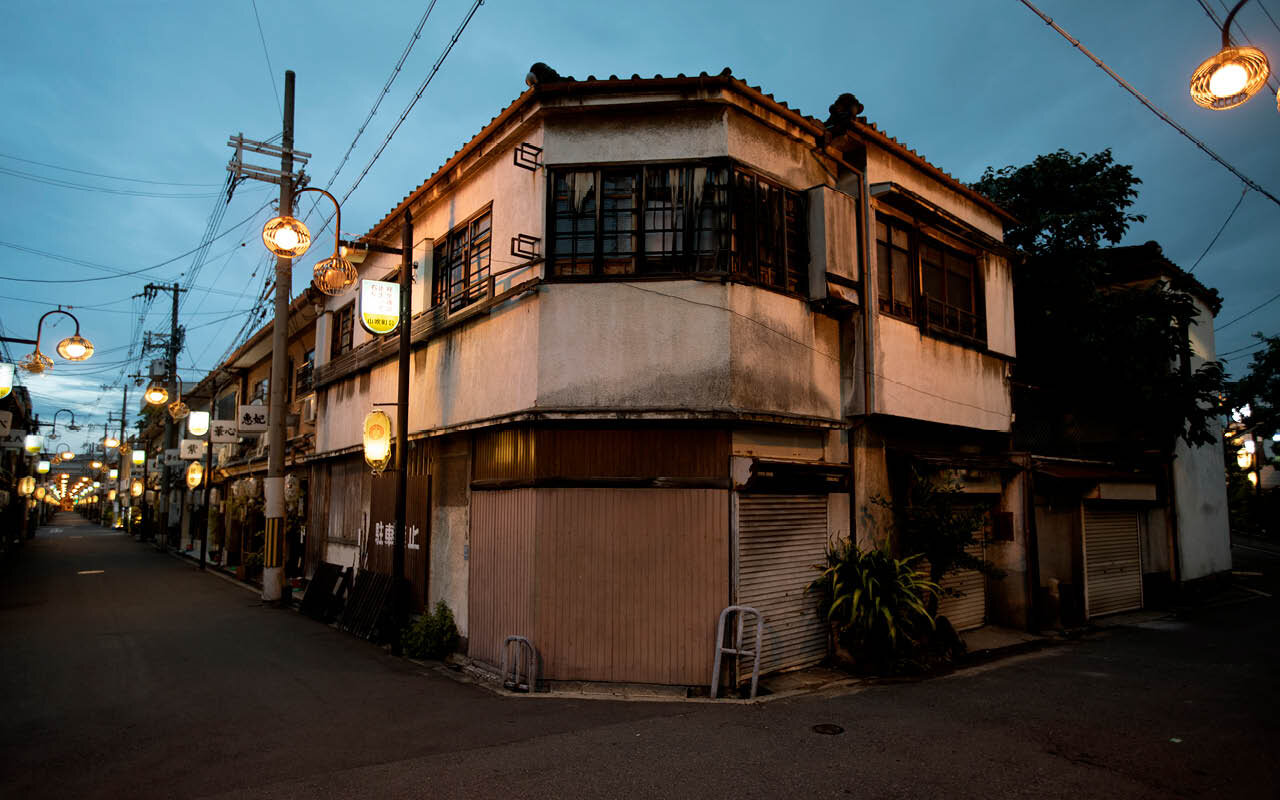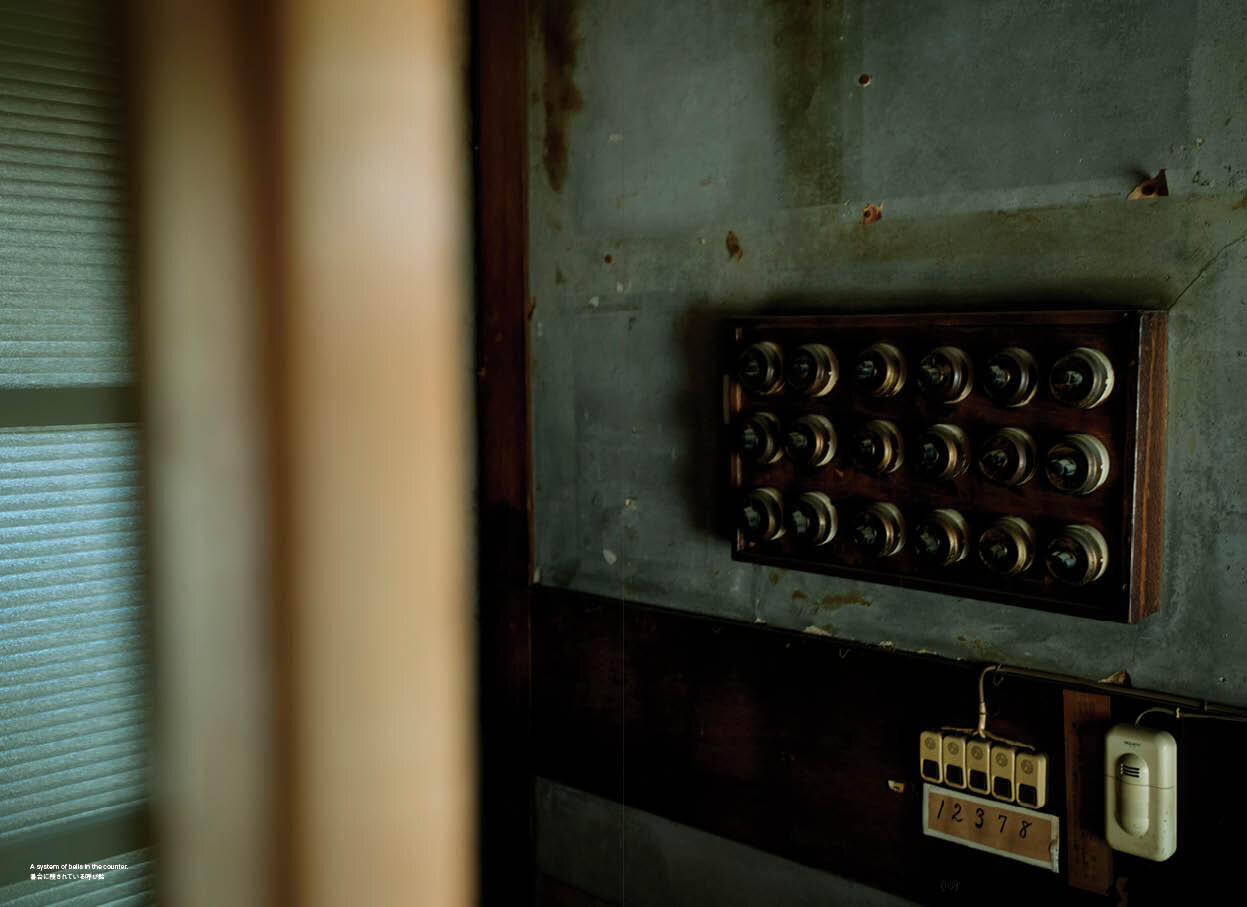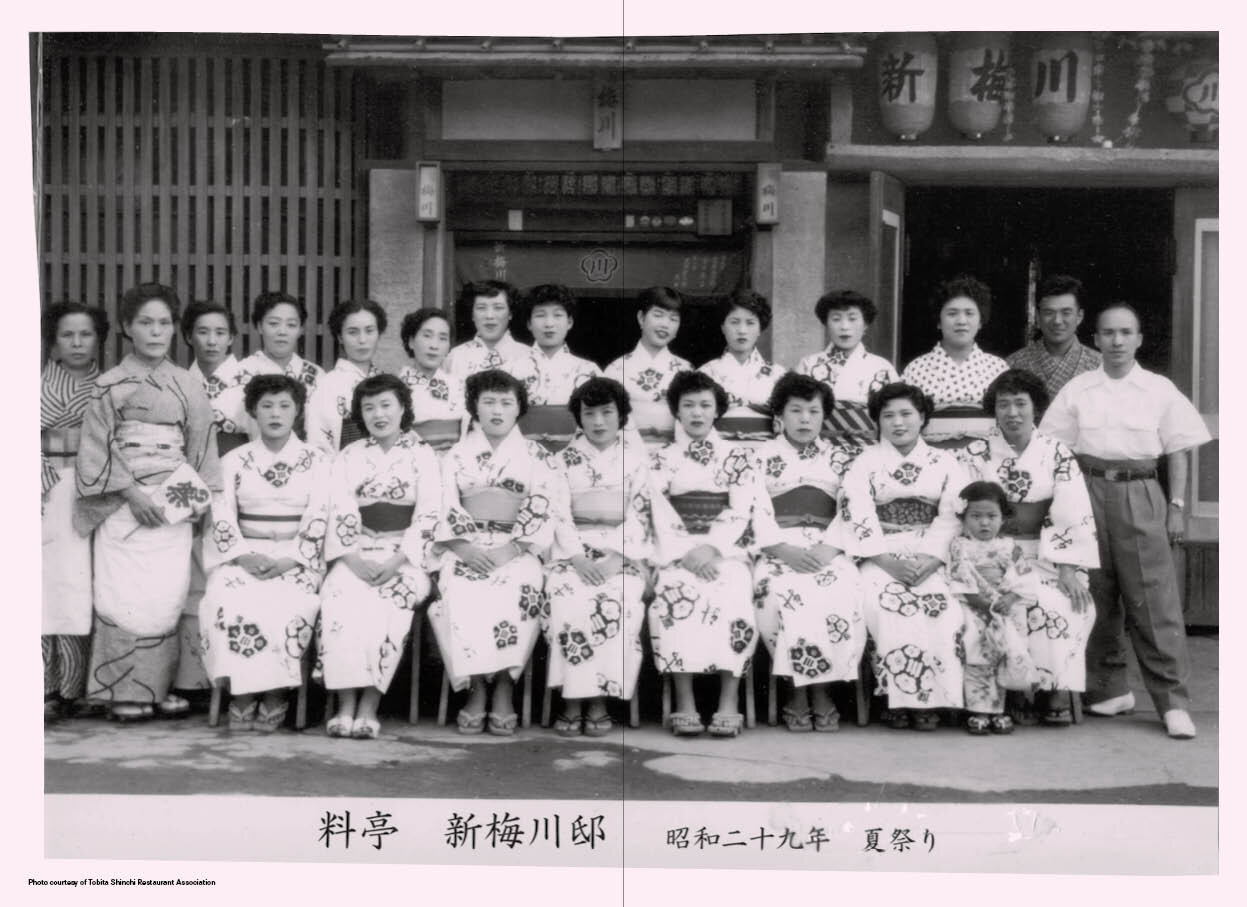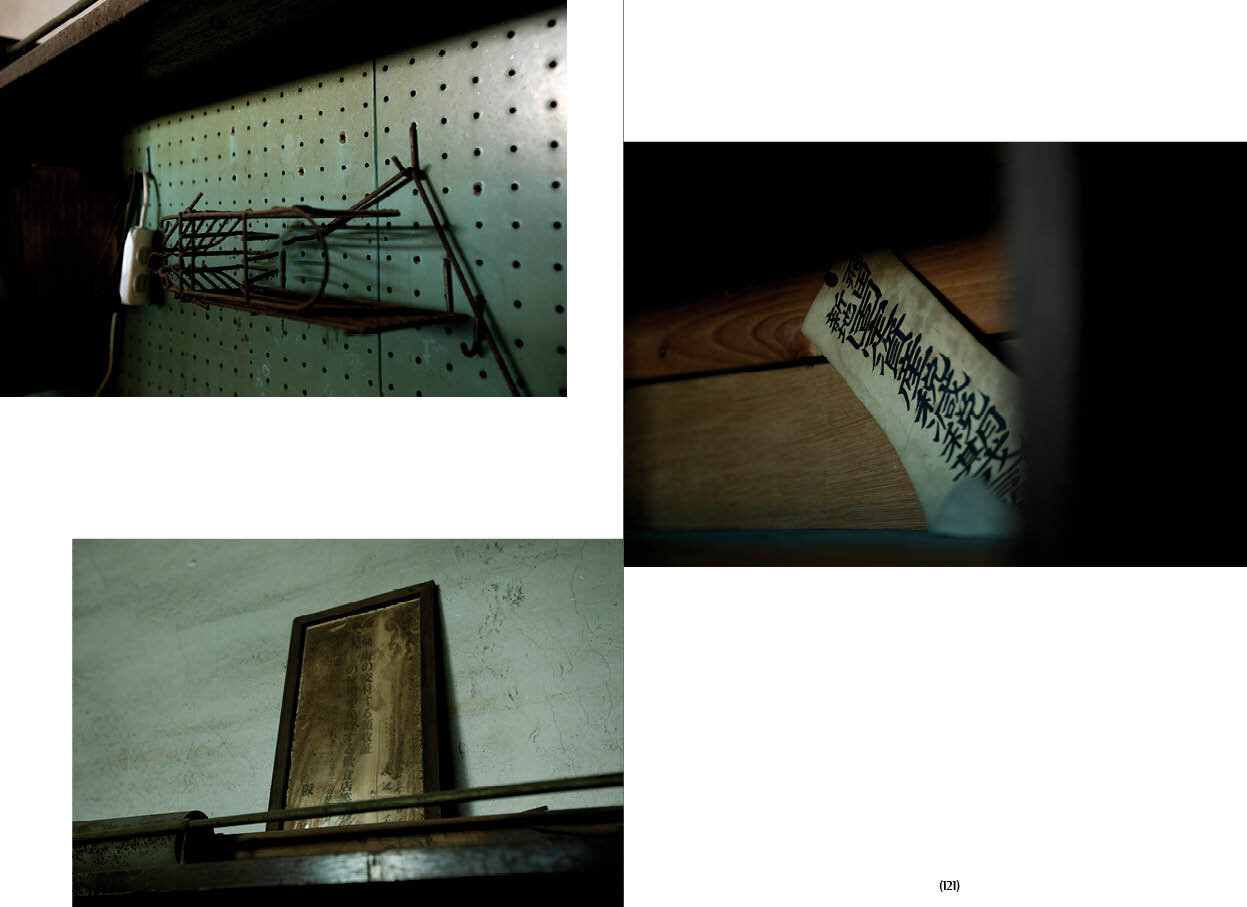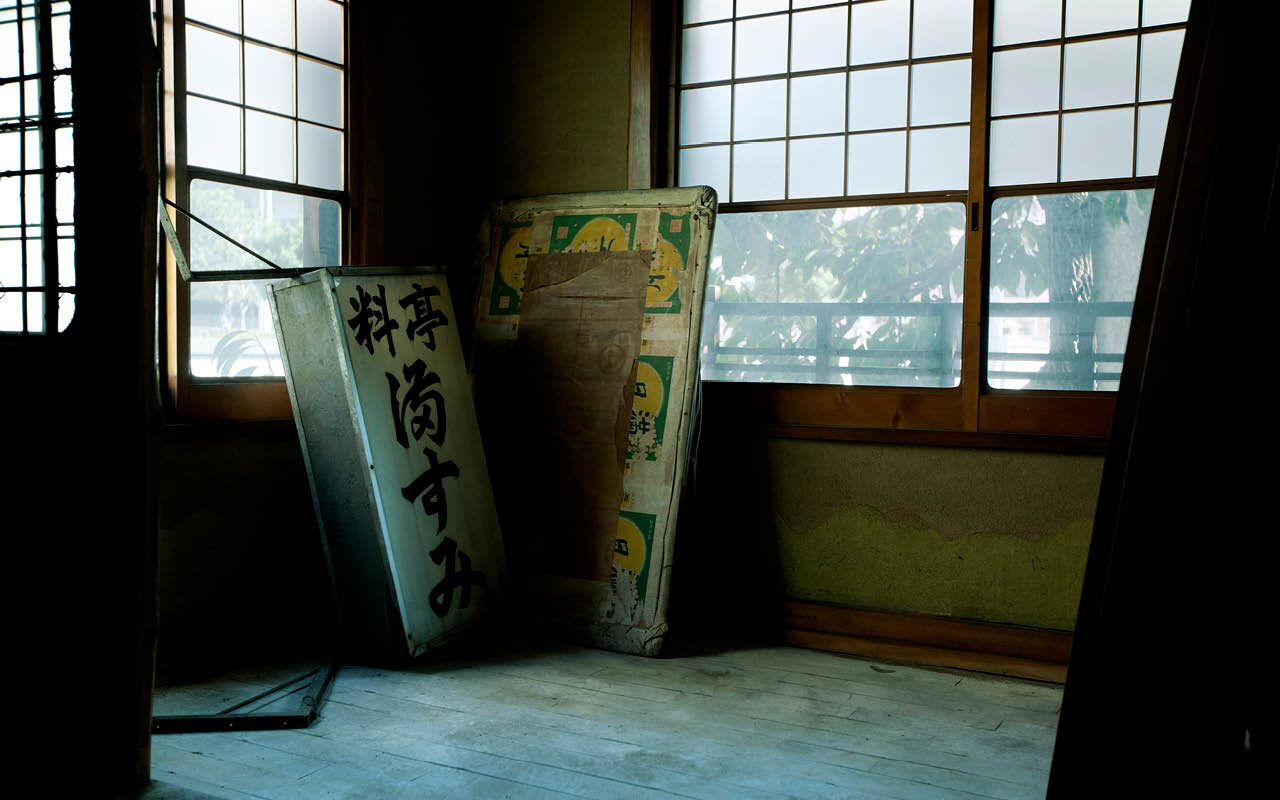
JOURNALISM × ART
Kawazu Kikaku presents
「Masumi: Photobook of Japanese Yukaku in Tobita Shinchi」
We want to pass on the memory of a former Japanese brothel, now in decay, to the next generation! Photobook production project
Yukaku, the Japanese name for these red-light districts, existed from the first half of 17th century until the postwar period. A Yukaku was a neighborhood containing government-approved brothels which were surrounded by walls and moats. Yoshiwara Yukaku, in Edo (the old name for Tokyo), was one of the most famous examples. In fact, many manga and Japanese movies have stories set in brothels, including “Damon Slayer (Kimetsu no Yaiba)“, a box office hit in 2020, and the Japanese classic “Street of Shame” by Kenji Mizoguchi. That explains why many Japanese people are interested in Yukaku as a part of their history.
It was built in 1929, in the red-light district called Tobita Yukaku, in Osaka. After the full enforcement of the Anti-Prostitution Act of 1958, it continued its sex business under the guise of a restaurant called Masumi. (After 1958 Tobita Yukaku changed its name to Tobita Shinchi; they still provide sex services even now.) After closing its business in the latter half of the 1990’s, it has been left empty. It is dilapidated after being abandoned and exposed to the ravages of time. It can be torn down any moment.
However, once you enter the building, everywhere you see the unique features of brothel architecture of the first half of the 1900’s when Japanese culture fused with western influences.
Masumi has a space on the ground floor that has a bar counter next to it. That is an example of a time when people preferred modern and western architecture to traditional wooden brothels. In the past, the common way to pass the evening was for clients to first enjoy a musical performance, such as Geisha singing and playing the Shamisen (a traditional three-stringed instrument) in the tea house, then heading to the brothels. But in the early 1900s, the sex services became less ritualized and more practical, and access to the prostitutes became quick and direct. Looking at this large space on the ground floor of Masumi that looks as if it was a dance hall with tiled floors and plastered walls, you can tell that this building was quite fashionable for its time. Clients probably used to have drinks and danced with the waitresses before going upstairs to the small rooms.
Masumi also shows us the control measures that they took to prevent the spread of infectious diseases.
In the first half of the 1900’s, when Tobita Yukaku was developed, pulmonary tuberculosis was a big threat to public health. So they built a courtyard in each brothel in Tobita Yukaku to reduce the risk of infection as much as possible. The sunlight in these courtyards creates a warm upward current. That upward current ventilates the air inside the rooms.
Furthermore, we found remnants of the owner and the prostitutes who lived and worked in Masumi, such as a memo of body temperature that a prostitute with tuberculosis recorded, a resume belonging to an employee, and an installment purchase contract, cutouts of four-frame manga comics from newspapers, etc.
*What was Tobita Yukaku like?
Tobita Yukaku was built in 1918. It was located originally in the Namba area of Osaka but was relocated to the present location because of a big fire that burnt down the whole red-light district in 1912. It is said it contained more than 200 brothels at its peak before World War II. Taiyoshi Hyakuban, now a restaurant in Tobita Shinchi, used to be a brothel whose structure still remains. After the enforcement of the Anti-Prostitution Act in 1958, the red-light districts all over Japan disappeared, though Tobita Shinchi (built after Tobita Yukaku) still functions as a sex business district and retains the original ambiance of the past.
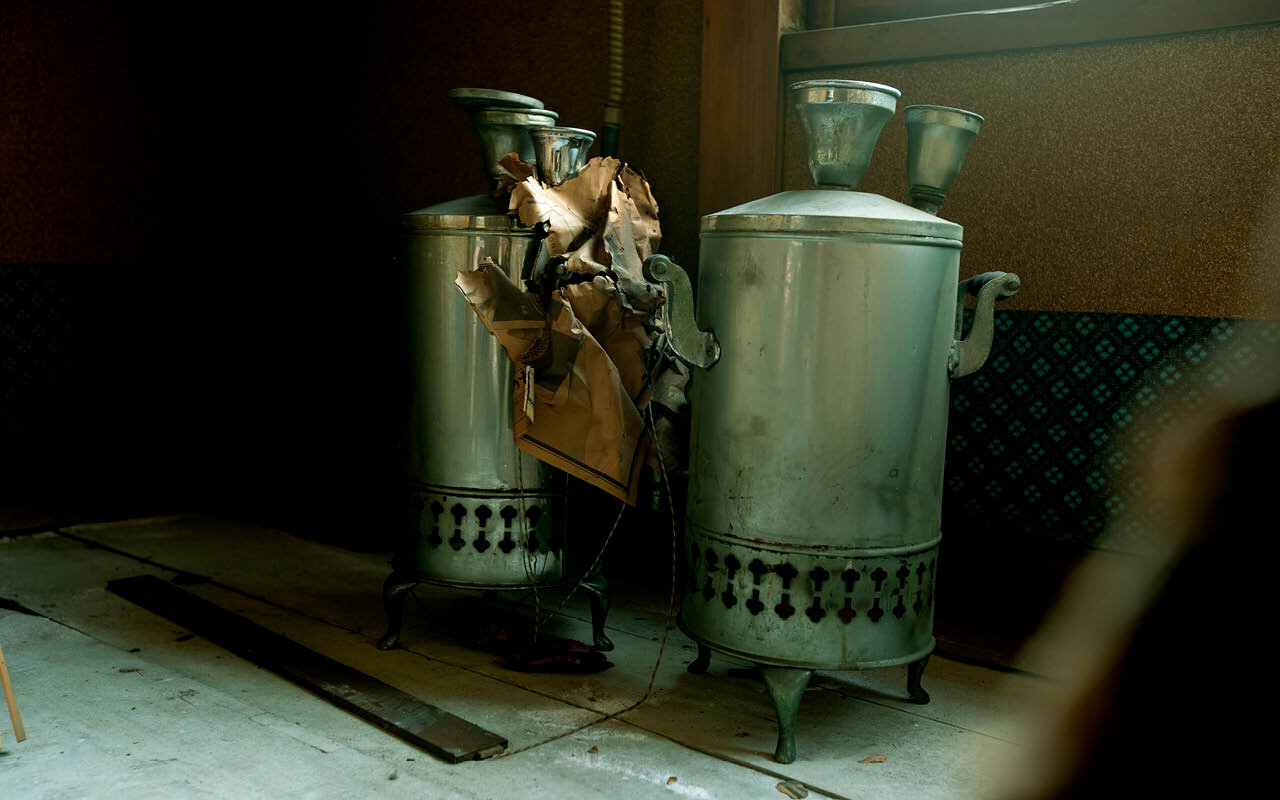
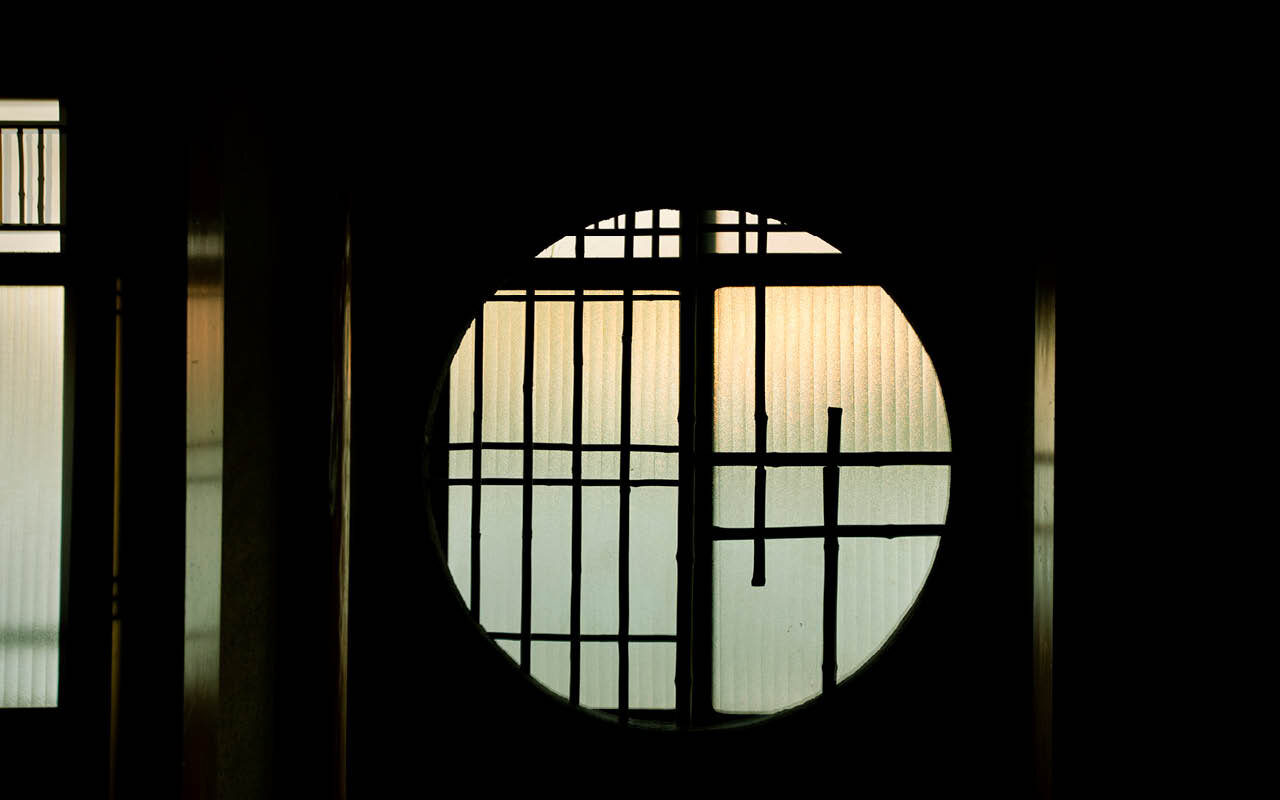


A photobook “House of Desires”
For this project, we decided to make a photobook of Masumi by collecting the memories of brothels that remain in their abandoned state. So that we can keep a record of the history of Japanese brothels from the 1700s, their architecture, and characteristics. Through what remains of Masumi, we can learn much about the culture and customs of the brothels of the past before it’s demolished.
The photobook is written in both Japanese and English. We are selling this photobook on the following website. Since the photobook will be shipped from Japan, it may take longer to arrive. We appreciate your understanding.
*Part of the revenues of this book will be donated to an NGO that supports women working in the sex industry. Revenues will also be used for repairing and maintaining the Masumi building, and for preserving the personal effects that were left behind.
Contents of the book
In addition to the photos and captions of Masumi, we interviewed the following people and summarized their comments. The photos below are some examples from the photobook.
1. Memory and legacy of Tobita Shinchi, the last red-light district
by Kunihiro Tokuyama, president of the Tobita Shinchi Restaurant Association
※Interview of the person in charge of the union that manages the red-light district of Tobita Shinchi
2. “Tobita Yukaku is a pioneer of the “Quick, cheap and direct sex trade”
by Ashita Saga, Professor at the Department of Japanese History,
Graduate School of Literature and Human Sciences, Osaka City University
※History, transition, and international criticism of the red-light districts in Japan
3. Tobita Yukaku is an homage to Edo Yukaku
by Shinya Hashizume, the Architectural historian
※The architectural characteristics of brothels in Japan
4. Arguing if sex work is right or wrong, an uncomfortable dilemma
by Ritsuko Inoue, the Non-fiction writer
※The viewpoint of a journalist who interviewed the brothel owners, prostitutes, and other female workers and wrote pieces about it.
She talks about their circumstances, human rights, and the current ordeal of prostitutes.
5. Preserving the past
by Shinichiro Kaneda, writer and journalist
※Why it is important to preserve what exists now before it disappears. An essay by an experienced journalist.
※144 pages, 220x220mm, soft cover, title stamped with gold leaf, full color offset printing and spot colors

If you want to know more about our project, please refer to the contact form.
KAWAZU KIKAKU CO.,LTD.
Founded by editor and journalist Tadashi Shinohara, Kawazu Kikaku Corporation is engaged in news reporting, documentary production, editorial support, and public relations strategies, among other activities.
Shinohara joined Nikkei Business Publications in 1999. After working as a reporter for Nikkei Business, he became Editor-in-Chief of Nikkei Business Cross Media, New York Bureau Chief of Nikkei Business, and then deputy editor of Nikkei Business (in Tokyo). He left Nikkei Business Publications in April of 2020 and began working as an independent editor and journalist.
His objective is to depict the intersection of society, the economy, and politics through people. He is also the author of several books.
